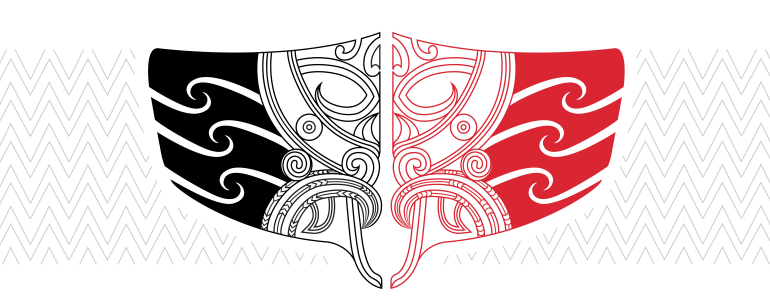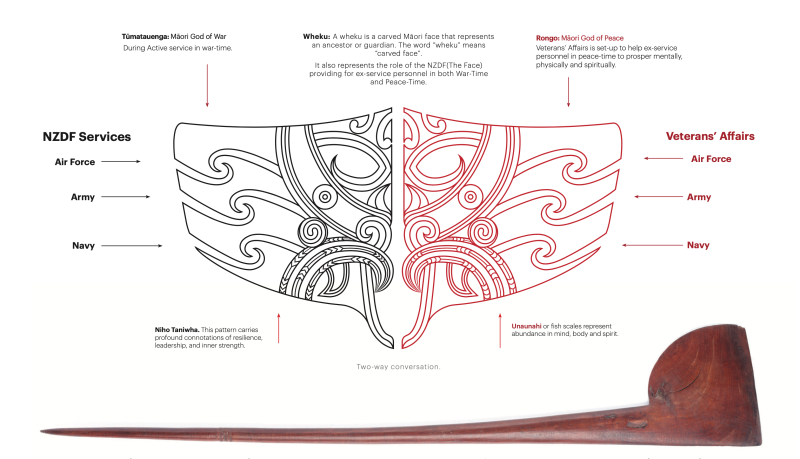A tewhatewha design for Veterans' Affairs

To honour our Māori veterans and our korero with them, Veterans’ Affairs has created a tewhatewha-inspired design.
A tewhatewha (teff-ah teff-ah) is a long-handled fighting staff that was used in battle not only as a weapon but also to communicate, guide, and signal directions to the war party.
The designer, Wiremu Farmer, duplicated and then reflected the tewhatewha to show two faces talking with each other. It represents former service people in discussion with Veterans’ Affairs.

View a larger version of the image [PNG, 1.5 MB]
Meaning of the Veterans' Affairs tewhatewha
Wheku (the whole carved face)
A wheku is a carved Māori face that represents an ancestor or guardian. The word “wheku” means “carved face”. It also represents the role of the NZDF (The Face), providing for ex-service personnel in both wartime and peacetime.
Tūmatauenga (the left side of the face)
Tūmatauenga is the Māori God of War. The black left side represents veterans. The sharp, detailed pattern at the bottom is Niho Taniwha. This pattern carries profound connotations of resilience, leadership, and inner strength.
Rongo (the right side of the face)
Rongo is the Māori God of Peace. The red right side represents Veterans’ Affairs. Veterans' Affairs is set up to help ex-service personnel in peacetime to prosper mentally, physically and spiritually. The rounded, detailed pattern at the bottom is Unaunahi or fish scales that represent abundance in mind, body and spirit.
The three levels of the outside edges
These reflect the Air Force at the top, the Army in the middle, and the Navy at the bottom. All three services are represented on both sides of the conversation.
We now have information available in te reo Māori
There are now 15 web pages that are available in both English and te reo Māori.
